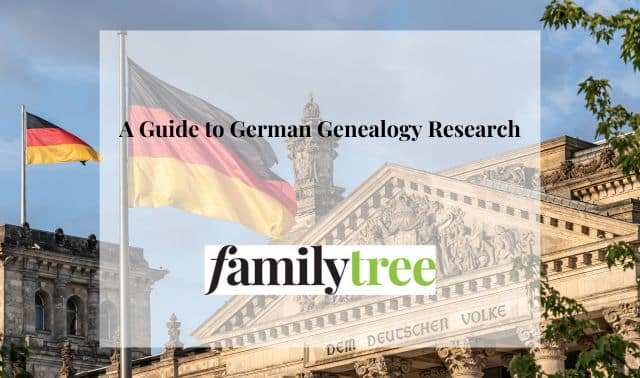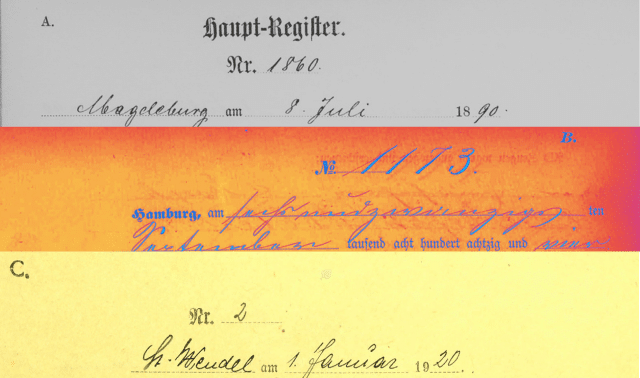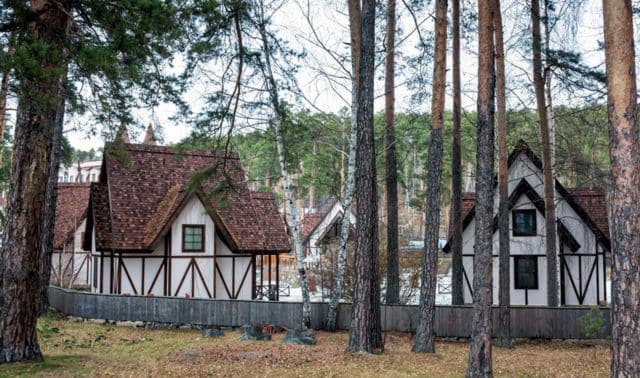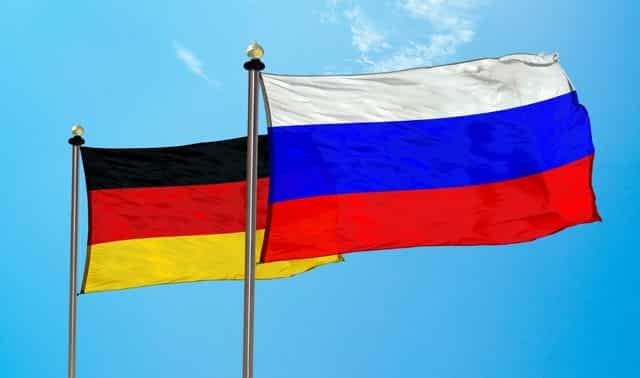Sign up for the Family Tree Newsletter! Plus, you’ll receive our 10 Essential Genealogy Research Forms PDF as a special thank you.
Get Your Free Genealogy Forms
"*" indicates required fields

More Americans trace ancestors to German-speaking parts of Europe than anywhere else. “German” ancestors may have come from Germany, but they also may have come from Austria, Switzerland, Alsace (part of France), much of what is now Poland, Luxembourg, southern Denmark, the present Czech Republic, or even a little bit of Russia. And until 1871, when modern Germany was born, our ancestors said they came from Prussia or Bavaria or Brandenburg or another German state, not from Germany.
What all these “Germans” had in common was that they were German-speaking. Even so, they may have spoken any number of German dialects. We’ll refer to people with the more-inclusive term of Germanic instead of German.
All you need to research your Germanic ancestor is his or her name, town or village of origin, and the date of a life event (such as birth or death). This sounds easy, but some common pitfalls can throw you off. We’ll explain five traps in German genealogy and help you avoid them to start discovering your Germanic roots.
ADVERTISEMENT
1. Tough-to-understand records
You don’t have to travel to Germany to track down even some of the most elusive records. You can find many records on this side of the ocean, including microfilmed church records, German newspapers, German-American church records, and Pennsylvania German baptismal certificates. Use the FamilySearch catalog to see what records the Family History Library in Salt Lake City might have for your ancestors. Run a place search for the county or town (in their American home or their village in Germany), then examine the listings.
For example, let’s say that you wanted to search for your great grandfather Hans Mueller, who was born in 1900 and lived in Bavaria. You would fill out the FamilySearch form as follows:
This search will yield a number of different historical records, as you can see below:
ADVERTISEMENT
Early German records are usually composed in open paragraph form, rather than nicely laid out in columns labeled name, birth date, father’s name and so on. Some later records do use this standard columnar format. Because not every set of records is indexed, you may need to look through dozens or even hundreds of pages to find a burial, for example. Having a good idea when the birth, baptism or death occurred will help you narrow your search. Note that you will have to be logged into your FamilySearch account to view most records. This is completely free.
Unfortunately, some records have been damaged or destroyed by wars, fires, floods or disposal by authorities. So plan to look for alternate and secondary resources. On occasion, you may find that a German village sent duplicate records to regional archives. Or if a civil birth record went up in a blaze at the Rathaus (city hall), you may be able to gather information from a baptismal record.
Even surviving records may show damage by water, mildew, pests or smoke, making reading them a challenge. Again, try to “fill in the gaps” with other types of records.
But your greatest problem in understanding German records will likely be the language barrier and hard-to-read writing, whether German, Latin, French or some other language (due to changing jurisdictions in Europe, your Germanic ancestor’s records may be in any of these languages). For help, see the handwriting guide at Family Search: German Handwriting.
2. Name changes and translations
Not finding your ancestor in genealogical records? The name you’ve been searching for may be wrong. Your ancestor may have changed his surname after immigration, or English-speaking clerks may have translated it. In colonial America, Bentz evolved to Pentz and eventually Pence; Zimmermann became Zimmerman or was translated to Carpenter; and Schwarzwälder became Blackwelder. As many as a hundred names could be derived from a single German surname.
Watch for regional customs, too. If you have ancestors from northern Germany around Ostfriesland, you may find a pattern of changing last names. This area used patronymics—surnames taken from the father’s given name. For example, Peter Hansen’s offspring would have the last name Petersen. Ancestors from around Westphalia may have based their surname on farm ownership. A telltale sign is when a man’s surname changed at marriage—his wife was heir to a farm.
If an immigrant’s name in US records does match the one in the records of his homeland, the change happened after he immigrated. Ellis Island officials didn’t write names; they merely checked the passenger list that was created at the port of departure. Your ancestor may have adopted an American-sounding name to identify more easily with his new home and avoid anti-German sentiments.
Don’t use census records alone to conclude an ancestor changed the spelling of his or her name. People didn’t write their own names on censuses. They (or a family member, or even a neighbor) stated their names to the census enumerator, who wrote them down. One census enumerator may have written Müller, another Mueller and another Miller. Even within the same document, such as a will, you might find a name spelled different ways. Note all name variations you find and don’t limit your research to the most common spelling.
Say your ancestor was named John Snyder. But that may not be how he spelled it. He wrote it as Johann Peter Schneider. John is the English form of Johann and Snyder is an Anglicized form of Schneider. So you might not be able to find him in the census index under Snyder or even Snider. You also should look under the original German spelling, Schneider. Fortunately, most genealogy databases, such as those at FamilySearch.org and subscription site Ancestry.com, will find these name equivalents.

But yet another pitfall lurks. North Americans typically use our first names. Looking at the name Johann Peter Schneider, we’d see Peter as just a middle name. But in Germany, people were often given saints’ names (common ones were Johann, Maria and Anna) as first names and were called by their middle names. Your safest bet is to look for both Johann and Peter in records.
And Peter’s wife Maria Baker? By now you know to search with her middle name, Magdalena. But Magdalena may have been shortened to Magda, Maggie or Lena. Baker is a translation for the common German surname Becker, derived from the baker occupation. In other words, you might find Maria Magdalena Becker under Lena Becker, Maggie Baker, Magdalena Becker or Mary Baker.
Some given names are typical of a certain region or religion. The use of a saint’s name doesn’t automatically indicate a Catholic ancestor—Protestants have saints, too—but individuals with names such as Franz Xaver, Anton, Josef, Johann Baptist, Maria Theresia, Franziska or Maximiliane are likely Catholic. Men named Carsten or Jens probably came from Schleswig-Holstein. Women named Frauke or Antje probably came from around the North Sea or the Netherlands. Men named Benedicht or women named Verena or Rosine may be Swiss. Harm and Cord are Hanoverian versions of Hermann and Conrad. Gesche, Mette and Wiebke are Hanoverian female names.
Note that families didn’t always follow patterns in naming children. In a few regions, you might see the oldest son named after his father’s father; the oldest daughter named after her mother’s mother; the second son named after the mother’s father; and the second daughter named after the father’s mother. In other areas, baptismal sponsors or godparents provide given names. Baptismal sponsors were usually, but not always, related to a parent.
3. Elusive places of origin
European places of origin are hard to identify and pinpoint geographically. Look for any mention of the place in censuses, marriage and death records, obituaries, family Bibles, papers brought from overseas and family histories. Friends and neighbors in America may have come from the same place as your ancestor, so try to follow the same process with them.
Suppose you find your ancestor’s birthplace listed as “Preisen” in the 1880 US census. You might think your next step would be to locate a village named Preisen. But before you try too hard, know that birthplaces in most censuses aren’t specific. American birthplaces are states, not cities, and similarly, foreign origins are listed by country. Don’t expect Preisen to be a village, but rather a country or perhaps a state within a country.
The only German state that resembles Preisen in spelling is the largest German state, Preußen/Preussen, which you probably know as Prussia. Just as surnames are often misinterpreted, place names also can be misunderstood.
Tip: Don’t forget that neighbors in America may have come from the same place as your ancestor—their records may contain clues about your family.
4. Confusing dates
Germans have historically used numerical abbreviations for months ending in -ber: 7ber, 8ber, 9ber, and 10ber. But July and August, the seventh and eighth months, don’t end in -ber. What’s going on? This counting goes back to the time when the year began on March 25, which made March the first month, April the second month, and so on. The abbreviations 7ber, 8ber, 9ber, and 10ber refer to September, October, November and December. The variations 7bris, 8bris, 9bris, and 10bris mean “of September,” “of October,” and so forth. These abbreviations were common even after the calendar was modernized to begin the year on Jan. 1.
Sometimes Roman numerals are used for months, for example, Xber, Xbr and Xbris refer to December. If the Roman numerals are not followed by -ber, -br, or -bris, they conform to the new calendar style, with X for October and XII for December. A record might read as follows: geboren den 15. V. 1833 (born 15 May 1833) or getauft den 3. IV. 1759 (baptized 3 April 1759).
Another way to distinguish dates in Germanic records is the occasional reference to special days: Easter is Ostern, Pentecost (Whitsunday) is Pfingsten, Christmas is Weihnachten, and New Year’s Eve is Silvester.
5. Cultural myths
You may be familiar with—and even have ancestors from—various small Germanic cultural groups that helped settle North America. But don’t believe everything you hear about these groups:
Anabaptist
This movement gave rise to a number of religious groups, including Mennonites, Brethren, Amish, Hutterites, Baptists, Dunkards and Schwenkfelders. Adherents have as little as possible to do with civil government and the military. They dress simply and believe in personal faith. The term Anabaptist does not mean “anti-Baptist.” Rather, it means “rebaptism.” Anabaptists believed those baptized as infants didn’t understand the rite and must be rebaptized by their own choice.
Hessians
You may remember these soldiers as mercenaries for the British in the American Revolution. But not all of the soldiers we call Hessians were from Hesse; many were from Waldeck, Brunswick, Anhalt-Zerbst, or Ansbach-Bayreuth. Sometimes the very colonists the Hessians were fighting against had emigrated a generation earlier from those same German-speaking lands. When a “Hessian” soldier was captured as a prisoner of war, he may have been sent to work for a farmer who understood his German language.
Huguenots
These French Protestants dispersed after 1685, when King Louis XIV revoked the Edict of Nantes guaranteeing the freedom to practice their religion. Many Huguenots remained “underground” in France, while hundreds of thousands left for Switzerland, Germany and elsewhere in Europe. Sometimes they kept their French language and culture, and sometimes they adopted the language and customs of those around them. Some Huguenots eventually immigrated to America.
Moravians
Similar to Palatines and Hessians, Moravians don’t necessarily come from Moravia. Jan Hus founded the religion in Moravia, now part of the Czech Republic, but Moravians’ European “headquarters” at the time of their emigration to America was far to the northwest in Herrnhut, Saxony.
Palatines
In the 1700s, the Palatinate was a fragmented area along the Rhine River ruled by the prince-elector of the Palatinate. After 1815, the Palatinate was a contiguous area on the west side of the Rhine with its capital at Speyer and ruled by the King of Bavaria. The largest number of Germans in colonial America came from the Palatinate, so people tended to call all Germans Palatines no matter their origins.
Pennsylvania Dutch
This misnomer describes Germans in William Penn’s colony. Though a handful of Hollanders or Netherlanders also may have lived there, the “Pennsylvania Dutch” were German-speakers from Germany. Because the German word for the German language is Deutsch, colonial Americans may have lumped Deutsch and Dutch together.
Waldensians
This group, followers of Peter Waldo (1140-1217), split from the Catholic church. Many moved to the tolerant Dutch states, and from there left to start the New Netherland colony in America. Italian Waldensians emigrated alongside their countrymen in the late 1800s.
We’ve shown you the pitfalls in understanding records, names, places, dates and cultural groups. Don’t let these challenges stop you. You can overcome them, just as thousands of other Germanic researchers have. When one road to discovery looks blocked, keep searching for a detour to the information you seek.
A version of this article appeared in the September 2012 issue of Family Tree Magazine.
Updated: September 2022
Related Reads
ADVERTISEMENT











